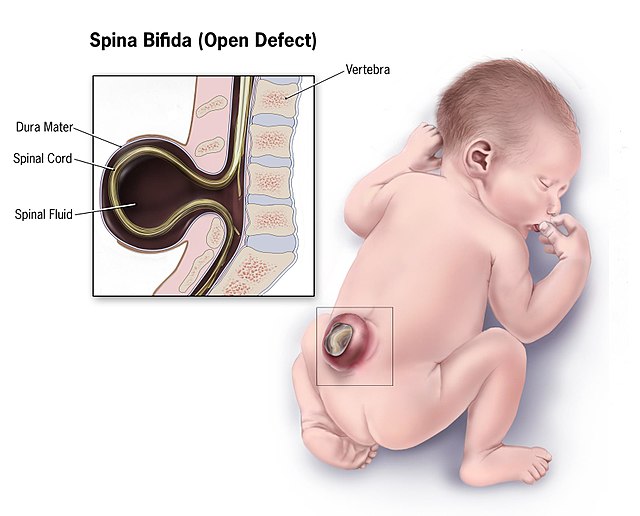
20 October 2023
Spina bifida is a congenital birth defect in which the neural tube, a structure that eventually forms the spinal cord, does not develop properly in the womb, leading to a gap or opening in the spine. The term spina bifida itself literally means ‘split spine’.
This condition can result in a range of physical and neurological symptoms, such as paralysis and bladder or bowel problems, depending on the severity and location of the spinal opening.
But what is spina bifida like for the parents of children with the condition?
We thought we would share with you a heartfelt piece written by Nina, mother to one of our spina bifida patients.
“Spina Bifida is often described as a snowflake condition because it can vary in how it presents massively between people. For example, I have Spina Bifida as does one of my four kids and also my best mate. Although we all have similarities there are also big differences.
One of the similarities is that we’ve all used Ankle Foot Orthoses (AFOs) at some point in our lives. My friend only used hers as a child and didn’t need them as an adult. I used one as an adult but progressed to using a wheelchair and my kiddo has used one for around 8 years, ever since he could walk.

A baby with spina bifida
Spina Bifida often causes nerve damage which in turn can lead to muscles not growing or weakness in the affected area. We noticed this when our son was around 12 months old in one of his legs. A year or so later he had tendon surgery and serial casting and has worn an AFO ever since.
Something I don't think people talk about enough when it comes to disabled kids, is medical anxiety. Maybe if I wasn’t disabled myself, I wouldn’t understand it either. When you’re a disabled kid, life can often involve a lot of surgeries, medical appointments, being poked and prodded and sometimes spoken about as if you weren’t even there.
It can be scary and uncertain and anxiety inducing. Part of the work I do is being a disability mentor and I don’t think I know a single disabled adult who hasn’t got some level of medical anxiety (myself included).
On the flip side, as a parent of a disabled kid we also don’t talk about how anxiety inducing it can be to find and sometimes have to fight for appropriate, good healthcare for our kids. Spina Bifida isn’t that well known, I’ve encountered countless people (especially in my quest for AFOs) who haven’t had a clue what they were talking about and had the bedside manner of a very snappy weasel.
We found Sam Walmsley, (Director & Lead Orthotist at LOC) and LOC in 2018, to be honest I was sceptical because at this point, I felt like we’d exhausted all options and after literally being made what looked like a plastic ruler with some velcro attached to it at a previous place I’d found my hope was pretty thin.
I was starting to think that finding someone who knew about spina bifida and orthotics as well as being personable and being able to make my kid feel relaxed, was wishing for the moon on a stick.
Sam greeted us that first day with a big smile and spoke to our kid straight away, he understood Spina Bifida, he immediately spotted all the issues with the AFO our kid currently had. He explained to us what was going on with his leg, what could happen in the future and what the new AFO needed to do. He included our son constantly and explained and asked him before doing anything. I don’t think any of us had been that relaxed at a medical appointment before.
We’ve been coming to see Sam for five years now and I honestly can’t explain how pleased I am to have him as part of the team we have for our kid. The fact he is such a constant and we don’t have to explain our child or their history every time we come. The fact he spots changes in our son's leg and has been able to adapt his AFOs accordingly.
Above all else. it’s that our son never feels anxious about his AFO appointments. They’ve become something that he actually really likes, mainly because he gets a day off school and a nice lunch at the local Pret but also because Sam makes the appointments fun and relaxed. The whole space and everyone is always really friendly.
As parents, it’s been a massive weight off our minds to know that that part of his care is so well covered.”
If your child has a neurological condition like spina bifida and you would like to know more about what LOC could do for your child, please contact LOC directly.
Shine charity also provides specialist support from before birth and throughout the life of anyone living with spina bifida, as well as to parents, families, carers.
An AFO is an Ankle Foot Orthosis which as the name would suggest encompasses the ankle and foot. The objective is to control the position and movement of the ankle. AFOs are used to support weak limbs; they can also be used to immobilise the ankle and lower leg to correct foot drop. When set up correctly they can also have a great influence on the knee and hip joints. They are the most commonly used Orthoses.
The length of time that one needs to wear an AFO very much depends on the condition being treated. If it is a long-term condition like cerebral palsy or post-polio syndrome it is likely to be years as the condition cannot be cured. Your orthotist will advise you.
A patient’s comfort in their AFO is vital for compliance with the prescribed wearing regime.
So there are a number of steps the orthotist should take to ensure a comfortable fit: the patient’s heel should fit fully into the heel cup without excess space, the contours of the plantar surface of the AFO should match the patient’s foot, for children there needs to be up to half an inch growth room in the toe shelf length. At LOC we use our Gait Laboratories at our Kingston and Manchester clinics to fine-tune our bespoke orthotics.
A GRAFO is used to control instabilities in the lower limb by maintaining proper alignment of limbs and controlling their motion. It reaches around to the front of the knee extending down to the ankle. It works by altering a patient’s limb presentation to displace load and impact as well as offering further control to the knee.
The most flexible type of AFO is a Dynamic Ankle Foot Orthosis (DAFO). It is thin and provides flexible support to the foot and ankle.
We have the following facilities and amenities at our Kingston Upon Thames location:
We also have the Gait Laboratory for orthotics patients and Onsite Manufacturing for speedy turnarounds and adjustments whilst you wait.